‘We’re winning the fight – the Guinness Trust has rehoused almost all of the Assured Shorthold Tenancies – but there are plenty of reasons to continue occupying this space. We protest the needless destruction of these solid flats to make way for papier-mâché and glass. We protest the abuse of the term “affordable”, and the social cleansing of those who can’t afford the homes it is used to describe. We protest the use of guardian companies who allow their guardians less housing rights than tenants. We are a raised fist made from steel and bricks!’
– The Guinness Occupation
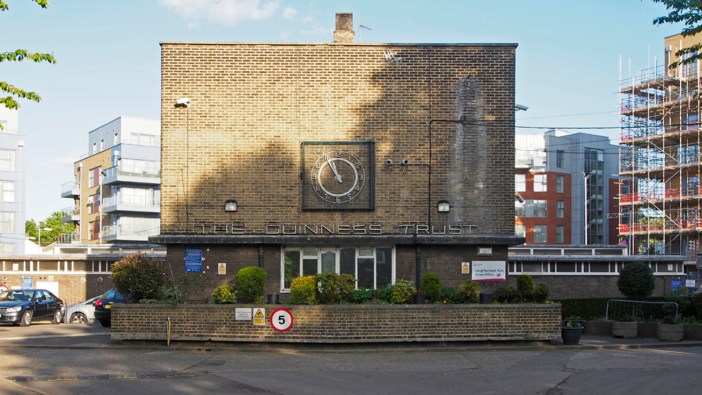
The Guinness Trust, where the clocks don’t work but the security cameras do.

‘Loughborough Park. Phase Two of development is now under construction. A further 95 homes for social rent.’
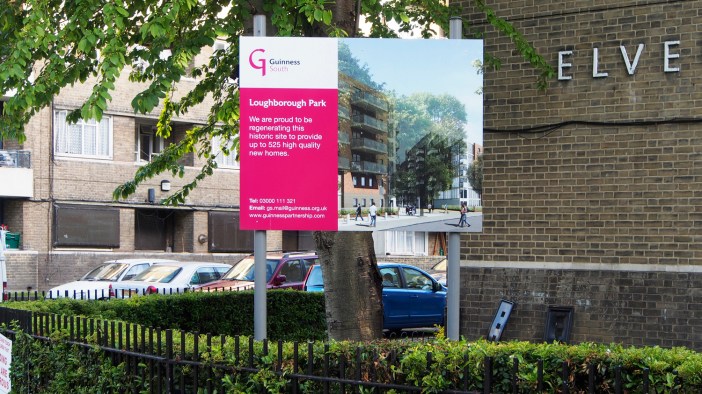
‘Regenerating this historic site to provide up to 525 high quality new homes.’
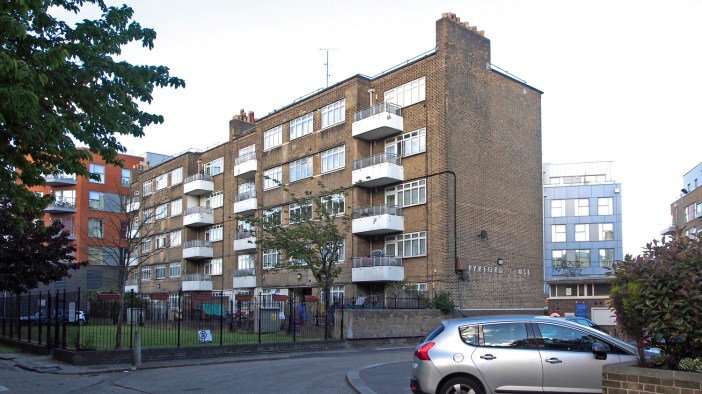
Pyrford House, earmarked for demolition.

Following protests, the remaining residents of the Loughborough Estate are now being threatened with mass, rather than phased, evictions.
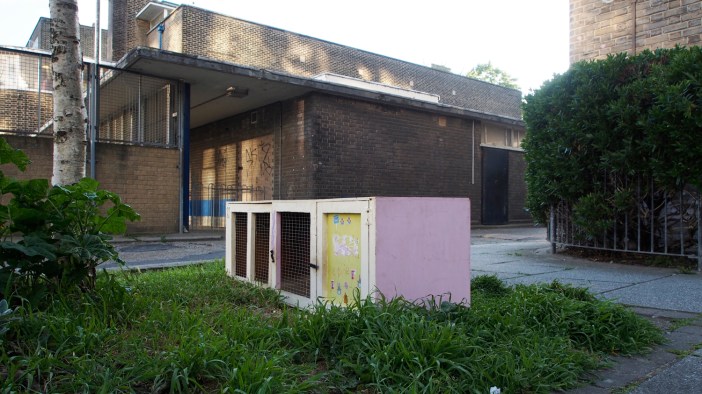
A re-housed tenant described the flats in the new development as ‘Glorified rabbit hutches’.
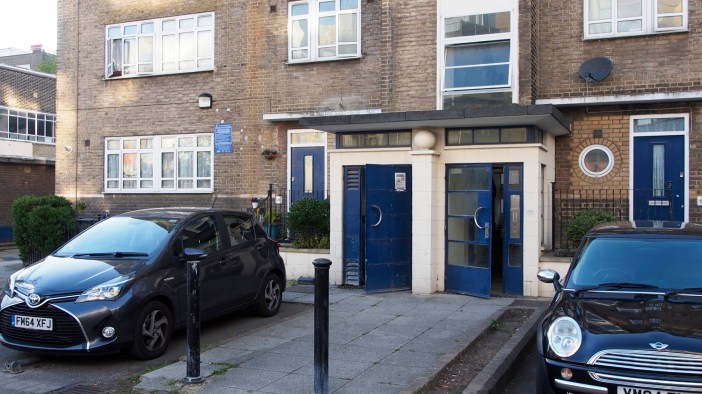
The block entrances to Pyrford House have been left open.
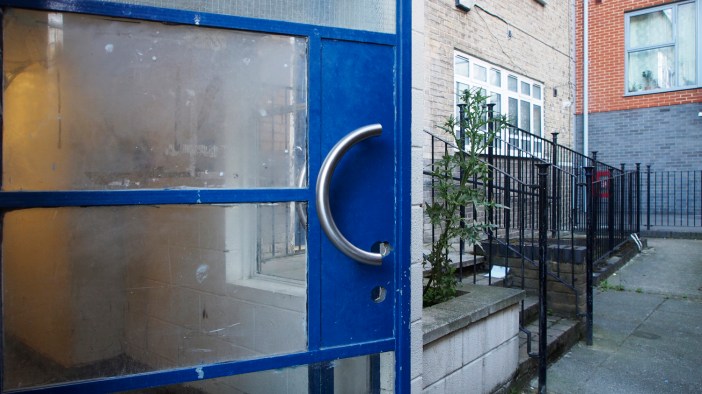
Doors to communal areas have had their locks removed by Lambeth Labour Council at the request of the Guinness Trust, a registered charity.

The halls and stairways are now open to the weather and passersby. A properly guardian I spoke to said that as a direct result of the Labour Council’s vandalism, the communal spaces are regularly littered with needles and condoms left by people from outside the estate.

And evicted flat with bolted and locked security door to stop re-entry.
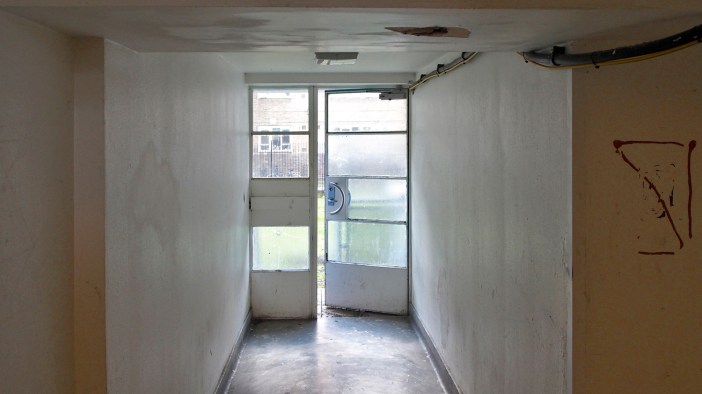
The effects on the internal hallway, which is spotted with bird shit. An example of how the Guinness Trust, with the help of Lambeth Labour Council, encourages residents to leave the estate voluntarily by degrading their living conditions.
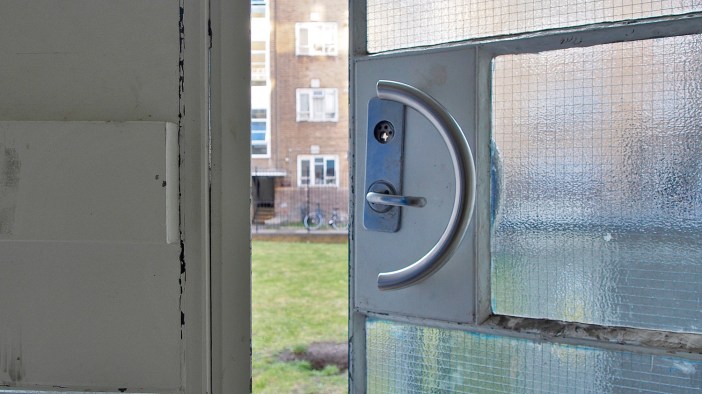
Another removed lock, this one on the door to the garden at the rear of the block.
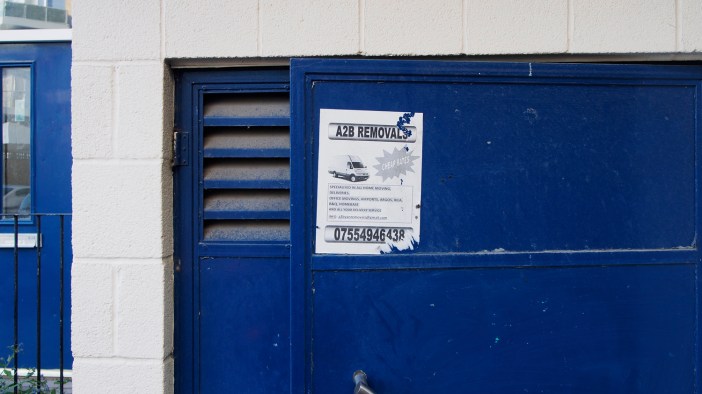
Local removal companies cashing in on the evictions. Social cleansing is, first of all, a lucrative business for the private companies involved.
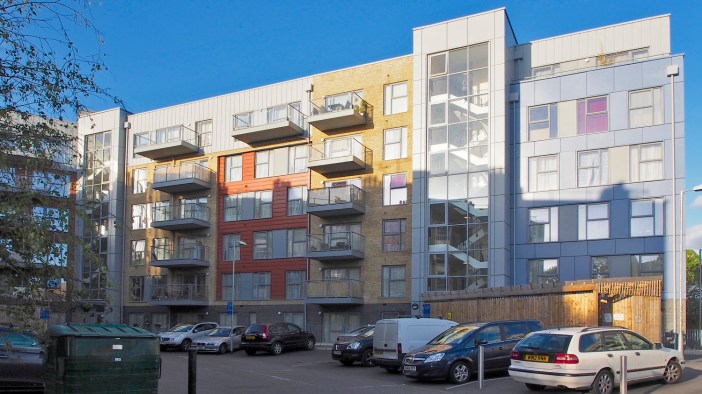
Part of the completed Phase One of the generic new development.
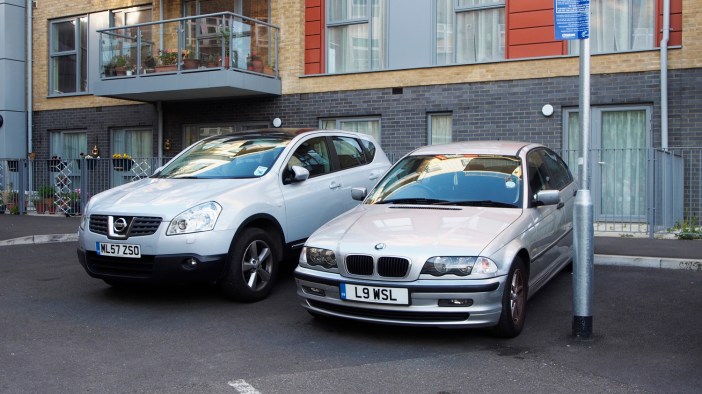
Meet the new residents.

The quickest way to tell the demographic of an estate is to look at the cars. As the sign says: ‘This land is private property’.
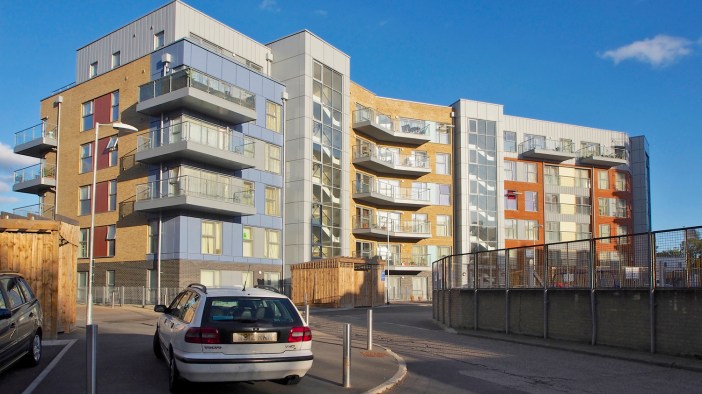
Rents on the new developments are around three times what the previous residents were paying to live on the estate. Regeneration is an active form of gentrification.
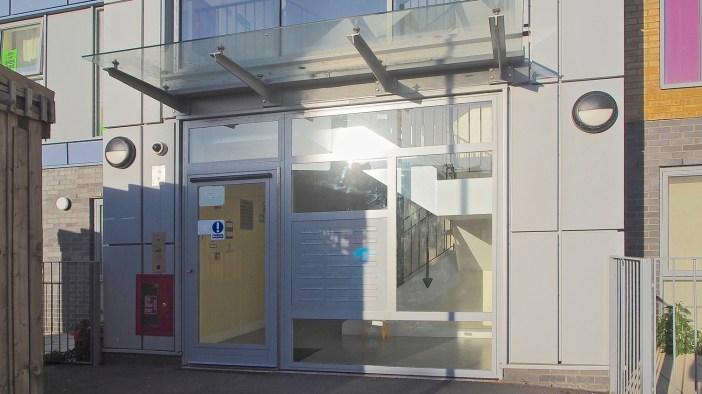
The business aesthetic of the shiny new entrances for the shiny new businessmen inside.
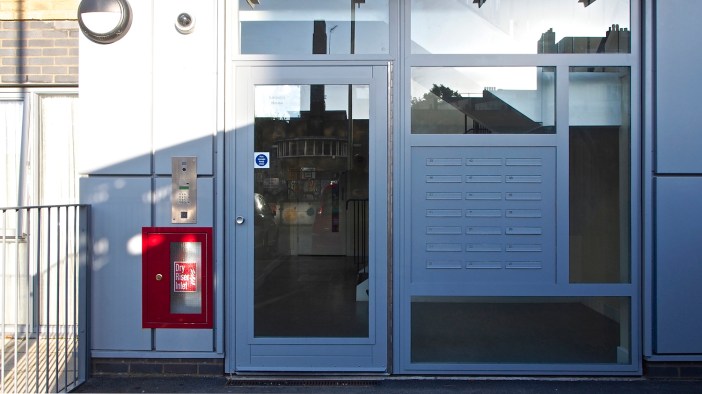
The cost of every new home is the enforced eviction of a former resident, many of whom lived on the estate for decades. Gentrification is social cleansing.
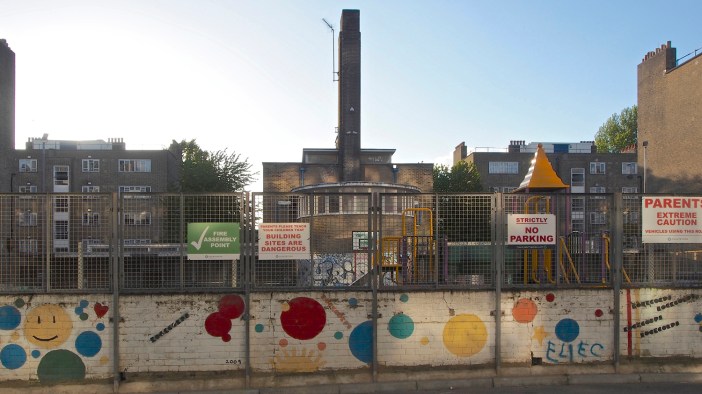
The now fenced-off playground has been turned, according to the numerous warning signs, into a place of danger for children. This is another example of the way in which housing associations and councils work to dismantle estate communities before forcibly evicting them.
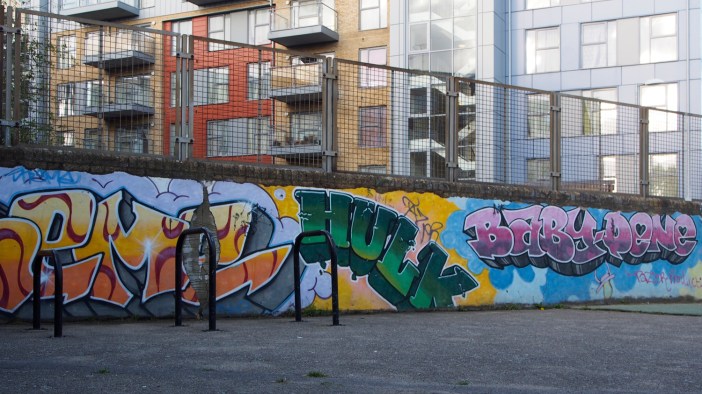
Chosen versus imposed colour schemes: an image of the class and race differences between former and new residents.
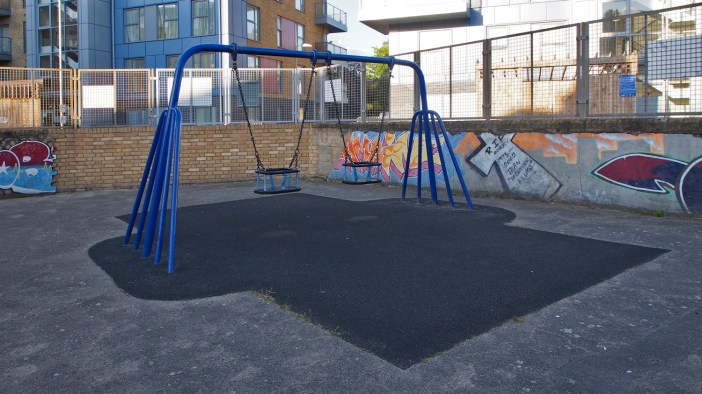
Once a home for working-class families and their children.
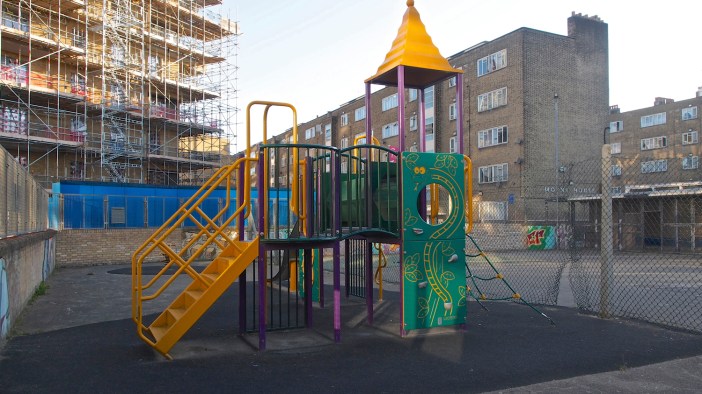
Once a home for Brixton’s black community.
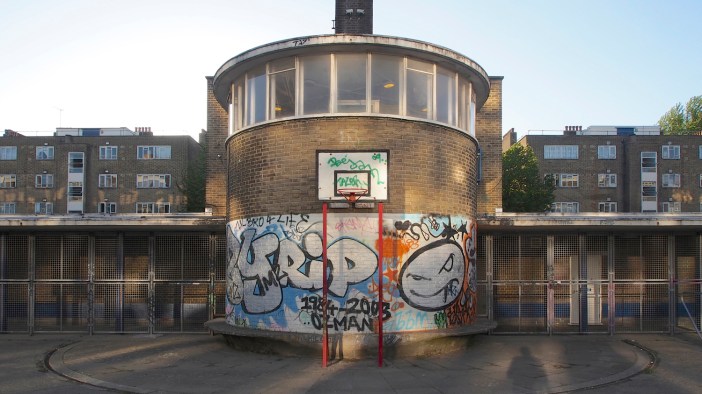
Denying access to the estate’s community hall is a tactic used by housing associations and councils alike to stop residents organising resistance to their eviction.
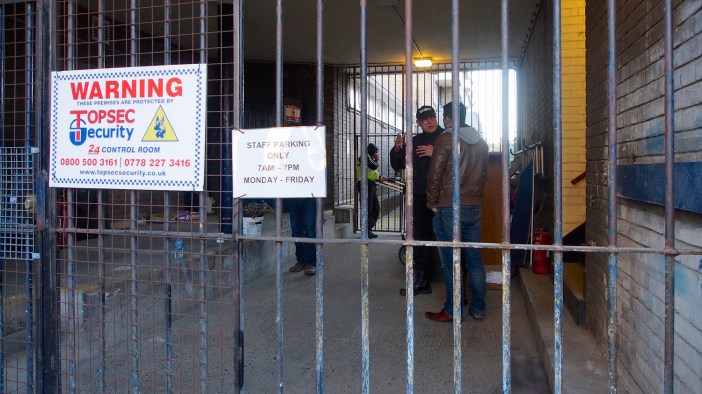
The private security firm, another industry getting rich on estate demolition, brought in to intimidate and evict the remaining residents.
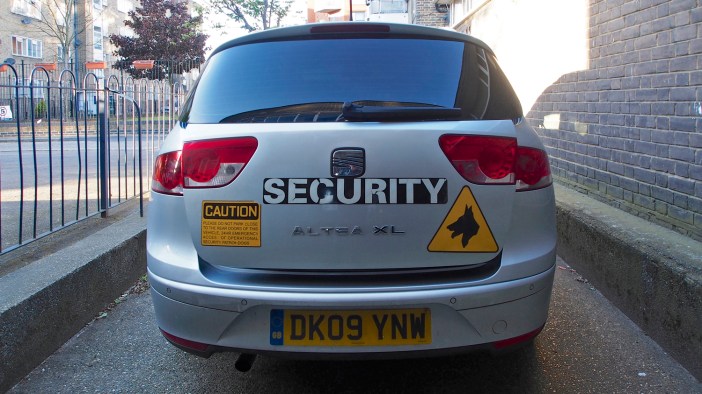
One of several dog units that have been used to threaten residents that are resisting their eviction. Inside was a barking Alsatian. On another visit this dog was used by security guards to try and intimidate members of ASH who were looking around the estate.
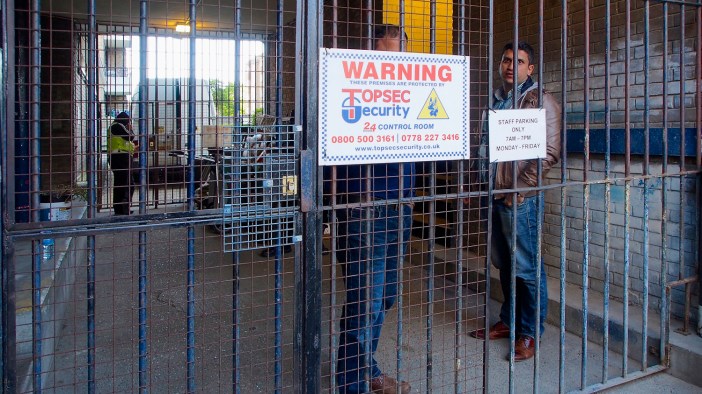
Secure cells. But for what, or whom?

Although evictions are, by law, a purely civil matter, security firms always have the help of the Metropolitan Police Force, and political occupiers and squatters are threatened with riot police.
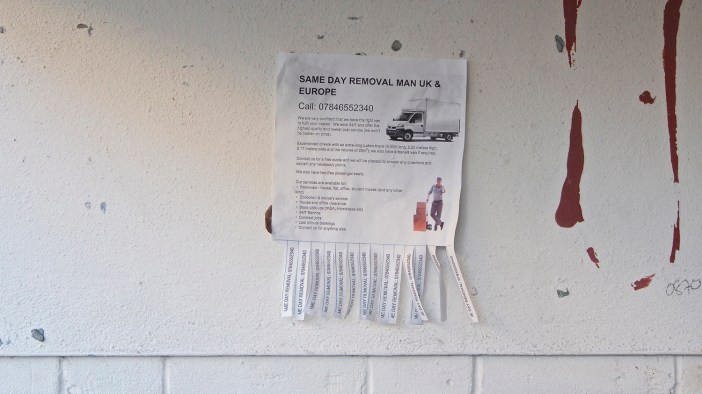
Inside one of the blocks, more helpful advice about moving for evicted residents.
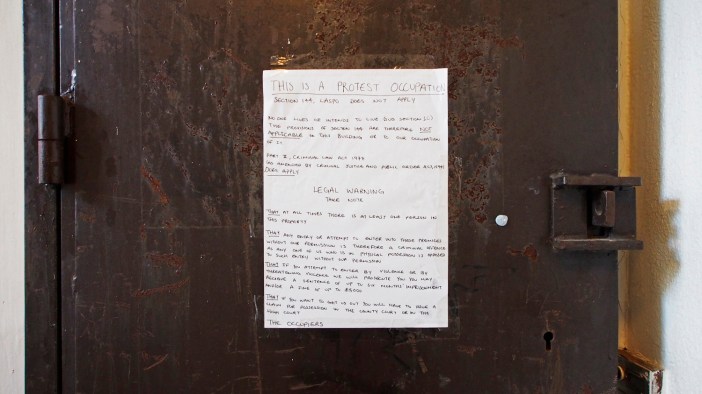
THIS IS A PROTEST OCCUPATION
Section 144 LASPO does not apply.
No one lives or intends to live (subsection 1c). The provisions of section 144 are therefore NOT APPLICABLE to this building or to our occupation of it.
Part II, Criminal Law Act 1977 (as amended by Criminal Justice and Public Order Act 1994) DOES APPLY.
LEGAL WARNING
Take Notice
That at all times there is at least one person in this property.
That an entry or attempt to enter into these premises without our permission is therefore a criminal offence, as any one of us who is in physical possession is opposed to such entry without our permission.
That if you attempt to enter by violence or by threatening violence we will prosecute you. You may receive a sentence of up to six month’s imprisonment and/or a fine of up to £5000.
That if you want to get us out you will have to issue a claim for possession in the County Court or in the High Court.
THE OCCUPIERS

Inside the political occupation, where banners protesting the eviction of residents and the demolition of the estate are painted.
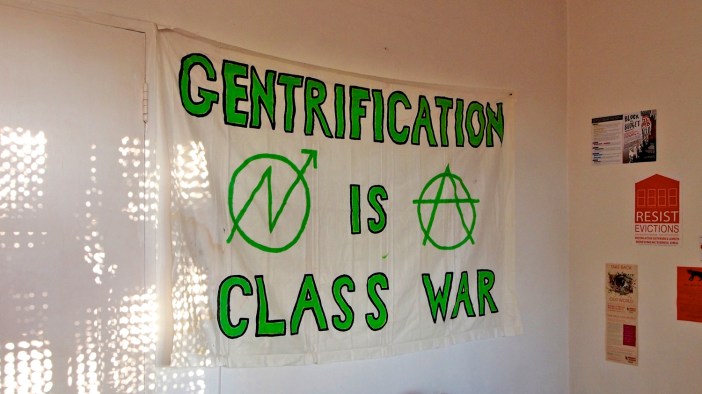
The empty flat has been turned into a community centre where residents, occupiers and protesters plan their campaign of resistance against the Guinness Trust and Lambeth Labour Council.
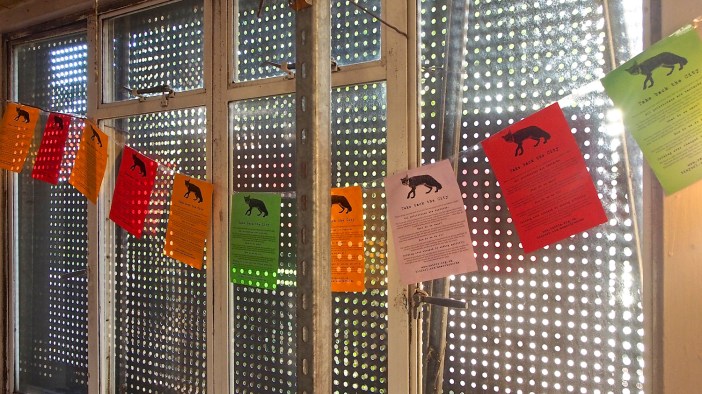
Like all evicted flats, the windows to the occupied flat have been blocked by the Guinness Trust with metal shutters.
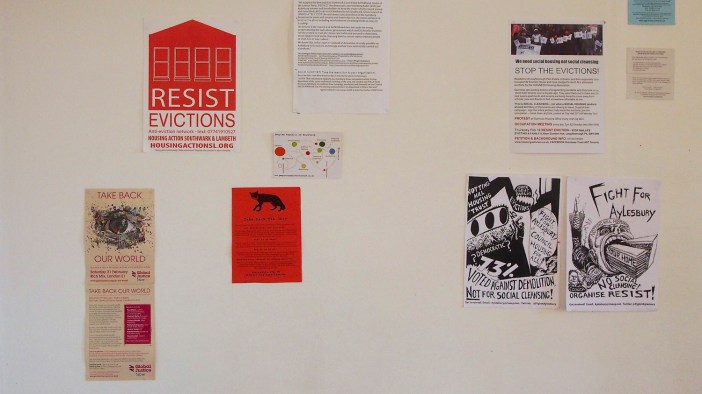
Leaflets linking the occupation to other campaigns resisting estate demolitions across London.

Information about squatters and tenants rights, with notices of demonstrations.
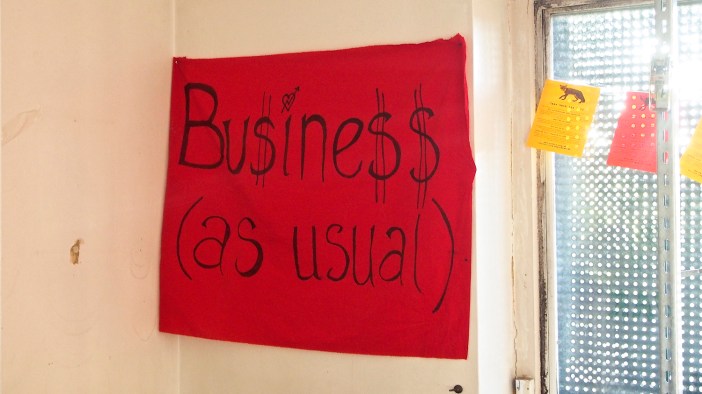
Simon Elmer
Architects for Social Housing
I would be interested to find out from a resident or former resident a floor plan for one and two bedroom flats in the existing blocks to compare to the new blocks. Or at the very least a comparison of internal space in square feet or square metres. Please contact me via the blog. Thank you.
LikeLike